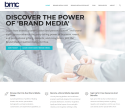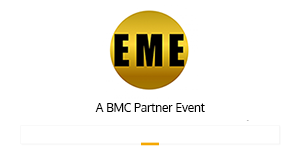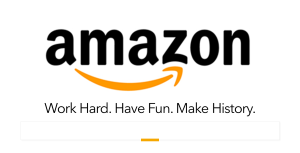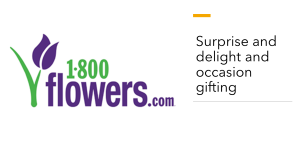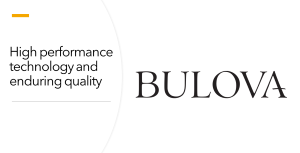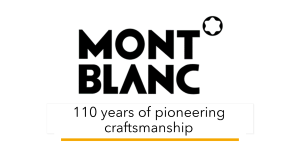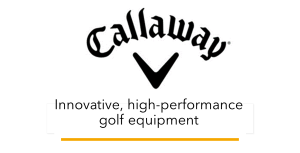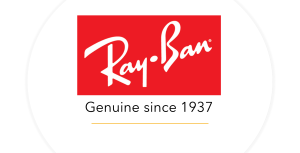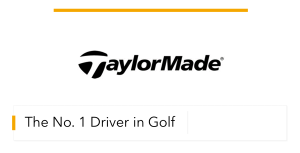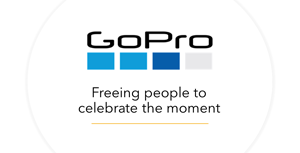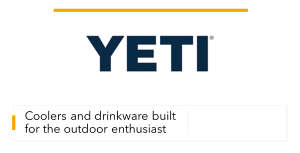Reimagining Business Meetings and Incentive Travel in the Post-Covid Era
 Despite a lot of talk about reimaging business meeting, association, and incentive travel formats after the end of the pandemic, and research from multiple sources that attendees highly prefer to spend time with one another over being lectured to in keynotes and panel discussions, there is evidence that the MICE (meetings, incentive, conventions, and exhibitions) is going back to business as usual, except perhaps in the area of environmental sustainability. This Enterprise Engagement Alliance RRN YouTube show interviews four highly experienced meetings and incentive travel specialists and a research analyst to find out what’s happening at the front lines.
Despite a lot of talk about reimaging business meeting, association, and incentive travel formats after the end of the pandemic, and research from multiple sources that attendees highly prefer to spend time with one another over being lectured to in keynotes and panel discussions, there is evidence that the MICE (meetings, incentive, conventions, and exhibitions) is going back to business as usual, except perhaps in the area of environmental sustainability. This Enterprise Engagement Alliance RRN YouTube show interviews four highly experienced meetings and incentive travel specialists and a research analyst to find out what’s happening at the front lines.The Current State of Meetings and Incentive Travel: In Transition
Format Alternatives
Sustainability
Return on Investment Measurement
Quick Advice to CEOs on Effective Meetings and Incentive Planning
Click here for links to RRN Preferred Solution Providers.
Four meetings and incentive travel executives and a research expert on all aspects of engagement joined an Enterprise Engagement Alliance RRN at RewardsRecognitionNetwork.com live and streamed YouTube Show on “Reimagining Business Meetings and Incentive Travel in the Post-Covid Era.”
Click here to watch or listen to the show.
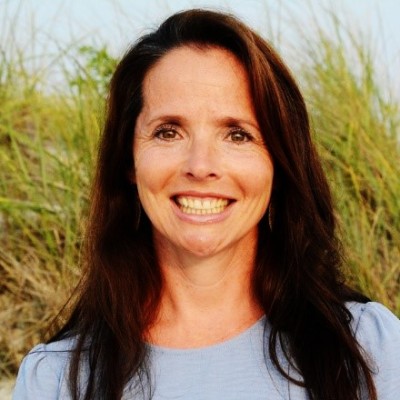
Their major conclusions—read more below for the individual insights of panelists.
- The meetings and incentive travel market is back with a lot of the same fundamental components as before the pandemic, but programs are beginning to shift toward greater focus on interactivity, downtime, more personalization, and authentic cultural exploration.
- Bringing large groups together in an auditorium with compelling keynotes, panelists, and entertainment is still part of the mix both for storytelling and energizing people toward a common purpose, but all agree that the traditional 80-20 ratio of plenaries and breakouts is now shifting toward 60-40 group versus more personalized experiences, and that even auditorium programs can benefit from more creativity and interactivity.
- People are under tremendous stress today for multiple reasons--planners should be sensitive that many people are carrying different types of emotional baggage to events and look for ways to help them hang up that stress for a few days to be with colleagues rather than pile more on to the stress they're already feeling.
- There is more emphasis on culture, authenticity, and exploration, but also a need to address the interests of all different types of participants, which can include those struggling with alcohol.
- Sustainability is a growing concern, but varies by client, as do issues related to concerns about fair pay of destination employees or the potential for human trafficking.
- The focus on return-on- investment measurement (that is, against specific organizational objectives) has gained some traction since the pandemic, but also varies widely by client.
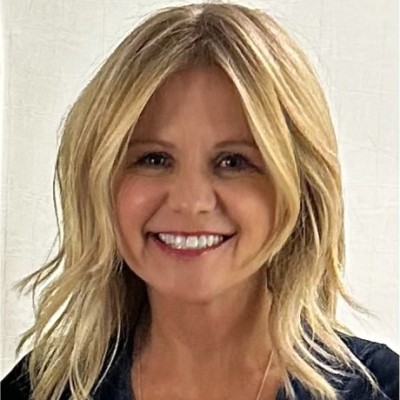 Panelists are Jacque Busby, Founder, CEO of Luxe Incentives, a 32-year-old meetings and incentive travel firm; Kate Cardoso, Director, Strategic Services, HMI Performance Incentives; Charlotte Frederick, Vice President, EGR International; Dr. Rick Garlick, Founder, Rick Garlick & Associates, with decades of research experience in engagement; and Melissa Van Dyke, Senior Vice President, Integrated Marketing and Innovation, The Creative Group, founded in 1970.
Panelists are Jacque Busby, Founder, CEO of Luxe Incentives, a 32-year-old meetings and incentive travel firm; Kate Cardoso, Director, Strategic Services, HMI Performance Incentives; Charlotte Frederick, Vice President, EGR International; Dr. Rick Garlick, Founder, Rick Garlick & Associates, with decades of research experience in engagement; and Melissa Van Dyke, Senior Vice President, Integrated Marketing and Innovation, The Creative Group, founded in 1970.Here are more details on insights from panelists. Please note their insights are edited for brevity. Click here to watch or listen to the show for their full remarks.
The Current State of Meetings and Incentive Travel: In Transition
.jpeg) Rick Garlick. The meetings industry is coming back, and business is looking promising for the immediate future...We are beginning to see changes in formats as people want more networking time, fewer keynotes and fewer panels and more downtime to interact with colleagues or just for themselves. What we're seeing in the research is that people don't want to go and sit passively and listen to a speaker and panels and say ‘oh that was nice’ and leave. They want more of a connection with other people and maybe that is a product of the pandemic when we had so little interaction with others and people just wanted to get out. They want to have leisure time. They want those special experiences, but they also just want time to be with one another and not have so much structure that they must constantly check their watches to see what session they must be at. They really want more flexibility to structure the meeting to their needs and have it be a more authentic experience for them.
Rick Garlick. The meetings industry is coming back, and business is looking promising for the immediate future...We are beginning to see changes in formats as people want more networking time, fewer keynotes and fewer panels and more downtime to interact with colleagues or just for themselves. What we're seeing in the research is that people don't want to go and sit passively and listen to a speaker and panels and say ‘oh that was nice’ and leave. They want more of a connection with other people and maybe that is a product of the pandemic when we had so little interaction with others and people just wanted to get out. They want to have leisure time. They want those special experiences, but they also just want time to be with one another and not have so much structure that they must constantly check their watches to see what session they must be at. They really want more flexibility to structure the meeting to their needs and have it be a more authentic experience for them.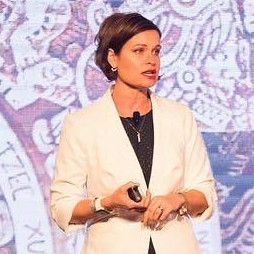 Melissa Van Dyke. Yes, we hear a lot of clients asking how do we change the format to be more interactive. I think the predominant feeling overall is how do we post-pandemic create a shared emotional experience now that we're back together and can gather and not just in the hundreds but in the thousands. Yes, that involves a lot of auditorium time together. I think there’s more of a passion to invest in experiences we can share together. And that oftentimes does still involve an auditorium with great keynotes and with really prepared panels.
Melissa Van Dyke. Yes, we hear a lot of clients asking how do we change the format to be more interactive. I think the predominant feeling overall is how do we post-pandemic create a shared emotional experience now that we're back together and can gather and not just in the hundreds but in the thousands. Yes, that involves a lot of auditorium time together. I think there’s more of a passion to invest in experiences we can share together. And that oftentimes does still involve an auditorium with great keynotes and with really prepared panels.Jacque Busby. One of our clients just had an incentive travel program for their dealers in Mexico and they opted not to have any business meetings even though they had sponsorship for it. What they did was put more money into the activities such as extraordinary catamaran rides that created super bonding experiences and made people feel like rock stars in a very unstructured way. We put a lot of emphasis on photography and so were able to capture a lot of memories that are, at the end of the day, what it’s all about.
Kate Cardoso. I think that it would be such a shame to go back to the way we were. I don't know many people who feel they are thriving right now. It's hard, emotionally, physically, mentally for many people. Many have kids or they have aging parents, and life is hard for many. That brings me back to Maslow's hierarchy of needs and the need to address the basic levels of the hierarchy of needs, the physiological, safety, the love and belonging, because people are really struggling. These programs are an opportunity to help people feel better so that they can be more engaged...When we’re doing a conference, we don’t want to hear keynote speakers talking about how great and successful they are. We want to hear about their struggles and how they got to their dreams; about how it wasn’t always easy and their failures or hard times along the way. And first and foremost, I want to incorporate their stories into the overall message.
Charlotte Frederick. The meetings and incentive world is changing for sure but I think it needs some work, as there still is the emphasis on the keynote and the panel discussion. The big buzzword that I’m hearing from a lot of clients is the desire for disruption--to turn the meeting format upside down and make it look different. But that is obviously challenging because they say that, and not all clients are necessarily comfortable when they see what that really looks like. It’s easy to go back to the normal format. What I’m finding we learned from the pandemic is that passive learning doesn’t work; we need more engagement so at each of these meetings I think interactivity is the focus going forward. So, it might still have the keynote and you might still have the panels, but you will be looking for ways to bring the audience in. The events in meetings are becoming experiences in and of themselves. Everybody wants to tell a story throughout the entire event, but we also should be wary of technology overload and overstimulation, which is another reason clients are bringing more interactions and wellness into their formats.
Format Alternatives
Melissa Van Dyke. I do think that formats are starting to change. We're just slowly returning to a sense of thriving. Organizations are trying to tell a story with their experiences that involves giving a little more time back to the individual, whether that's creating a co-working space at the event because we still must answer all the emails that are going on at work. Or that could mean recreating affinity groups that are a little bit beyond what they've seen in the past. So, it might be instead of just a first-timers’ meeting, it might be first-time moms...Or it could involve a 2,300 person Easter egg hunt that ends up back in the auditorium visually designed to activate the brand story...We're also seeing some really interesting investments in what happens in that space, like vertically, creating images overhead to reinforce the story so that there's more to experience and more to talk about afterwards than just a straight keynote or panel discussion. The entire experience starts from the time that they show up on site until the last day. It is about giving people more of what they want, personally connecting their experience to the story being communicated right through to the end. It’s always important to remember to ask is it chill, skill, or thrill that your people are seeking?
Jacque Busby. The opportunity is to create a community both before, during, and after the event. It can start with video calls getting different participants together before the event so that they get to know each other well in advance. We create these virtual groups in which people begin communicating together in a way that continues long after the event, so that there is engagement before, during, and long after the trip, creating incredible lift. People definitely are looking for more meaningful travel experiences. Post pandemic, the demand for travel was so great but at the same time the experience of flying was so poor. Some people were a little scared and they just wanted to know someone's going to take care of them. And so through effective logistics and communications, companies can build that sense of community upon which the organization can tell its story in a meaningful way.
Kate Cardoso. It’s so important to meet people where they are at. The problem is that everybody is at a different place in their lives, and in what they're ready or willing wanting to experience. So, especially in incentive travel, it's about structuring an agenda that has a little bit of everything for everyone. I just got back from an amazing incentive travel program to Madrid and Barcelona and there was a lot of leisure time and optional activities and excursions outside of the city. There were optional tapas dinners and dine-arounds. The farewell was at this wonderful villa outside of Barcelona, and I think the biggest hit of the entire trip was an amazing flamenco show that was part of the farewell dinner. People got emotional. It was such a wonderful way to end the trip.
I think many companies miss out on an opportunity to find out what people want and with their experience in the trip registration form. That’s a great opportunity to find out what people are looking forward to and to find out what brings them happiness. There's a lot that we can find out about people to be able to design a trip that will make sure that we’re meeting everyone where they're at. Add to the mix local authentic flavor in menus and activities, but I also think it's important to provide non-alcoholic options so that there is less pressure to drink. This is especially true if we're emphasizing wellness or understanding the fact that some people really struggle with sobriety.
Charlotte Frederick. The shift is happening. It's like everyone else is saying: personalized experiences are the direction that we're going. Everyone is different, people learn differently. As we get older, we learn differently than the younger generation. In an incentive trip, you want to give your customer an experience that they can’t get if they just travel on their own, and it’s not always about the big things. Sometimes it’s just knowing the personal tastes of someone. So, to Kate’s point, if you have an event at a winery, you might have an option for those who don’t drink. Clients are very focused on this now. While the content of meetings matters, the connections that people make really last so much longer so that building a community before, during, or after the event makes a big difference.
Sustainability
Rick Garlick. I can tell you that the research shows that meeting planners as a whole, a very large percentage of them, have sustainability goals, but also the research shows that very few of them are meeting those goals. What we’re finding is that there’s a generational shift. There are people very concerned about these issues and others who are not, and it’s not only a bi-coastal phenomenon but a generational one. And there are some who give lip-service to sustainability with no follow through.
Charlotte Frederick. I think sustainability is definitely top of mind. All clients are asking for ideas for sustainability and how they can be incorporated into their meetings. But in practice, change is hard. And as you know, the waste in meetings is huge. We do see hotels trying to change this in the big shift to digital signage and other sustainable practices. It’s not an overnight change, but it’s happening.
Jacque Busby. One of the elements we’ve always added to our programs are beautiful print brochures that people can hold on to as sort of an itinerary bible. The focus on sustainability has been a good thing because it pushed us to create beautiful digital versions, and that has been a blessing. Our clients generally are concerned about sustainability and the ethics of the people that they're doing business with. Each client is different: you always must validate their concerns even though it may not be your same exact concerns.
Kate Cardoso. HMI Performance Incentives has made a commitment to incorporate social responsibility as part of our overall sustainability strategy. And so, every program comes with a corporate social responsibility aspect to support the host destination. Our clients are offered a chance to involve their participants in an interactive activity on or off property, and if they do not choose to do so we contribute to a local charity. Another major concern is food waste, which we all know is a very big problem in the meetings industry. One of the ways we are addressing this is with working with hotels on meal guarantees. The hotels want those guarantees because they don’t want to run out of food, and neither do we, but if we both work transparently together on this maybe we can lower the guarantee by 3%, and we can save some of the waste and a little money for the client at the same time. We are finding more hotels serious about addressing these issues through more openness, transparency, and communication.
Melissa Van Dyke. I would agree with everyone that sustainability is almost always part of the conversation, but to what level that is dependent on the client. We are seeing everything from small changes to commitments to give-back programs and to using only hotels with Leed-certified green construction. I am particularly impressed with the commitment to sustainability by some of the properties in the luxury market.
Return on Investment Measurement
Rick Garlick. The industry learned a lot from 2008 when many were caught unaware when suddenly there were a lot of questions about the value and return on investment of these programs, which many designers were unable to produce. So many of those programs got cut and some of the research we did at the time showed that if you cut these programs, the benefits are lost within a year. So, we've gotten better at measurement, but the big problem is people don't know how to do it because, you know, there are hard dollars and there are soft dollars. If it's a sales program, you can see how more productive people were with the program than without, but there are a lot of other issues: do people feel more connected to the company and their colleagues? Will they be less likely to switch jobs and go somewhere else?
Melissa Van Dyke. I would say that every client values measurement; that is, how much of an impact did the program have based on the objectives. If it’s a sales-based program, it’s pretty easy, because the participants must achieve a goal to earn the trip...I would say that more organizations are looking at meetings and events from a marketing perspective now. The beauty of face-to-face meetings is that they are great for brand storytelling and creating digital assets that have marketing value throughout the year that often exceeds the value anyone can get from Google ads. And, not to mention all the information people are willing to share about themselves in the registration process that can be helpful not only for planning the event but for better understanding your audiences.
Charlotte Frederick. Organizations are more conscious and aware of the impact their events are having on how their overall objectives are being met and how they're spending their money. I do think that many companies do a good job of measuring events against their objectives in post-program surveys and analysis. In many cases, the real issue is what is done with that information after the event to enhance future events or for other marketing opportunities.
Jacque Busby. I have been pushing the concept of measurement for decades and have learned that you must meet clients where they are on that journey. So, yes, our company will take a program without being involved in the return on investment measurement process, but if they don’t want us to do that we can still measure levels of engagement and how well we helped create a sense of community. We can add a lot of value at live sales incentive events if they do not allow us to see the numbers or design the program by helping to create lasting relationships. We have a complete suite of technologies that help us track lots of valuable information, and can offer gift cards, merchandise, and other awards for people who did not earn the trip to help motivate that middle 60%.
Kate Cardoso. The measurement process starts with the purpose behind your event. What are you trying to achieve and work backwards from that. How many people do you wish to include? What’s your budget? It’s about getting back to basics and asking the right questions and encouraging clients to think differently because it's a different world and there are different opportunities to create a space of engagement and connection for attendees. For instance, the corporate social responsibility element provides an opportunity for attendees to engage with non-profit organizations and people that have taken HMI events to a whole other level besides it just being the right thing to do. It can change the entire trip experience, and it’s not difficult to do.
Quick Advice to CEOs on Effective Meetings and Incentive Planning
The panelists were asked to summarize the quick advice they would give a CEO about planning effective meetings and travel events.
Melissa Van Dyke. If you are investing those dollars to move people, ask yourself what you want them to think or do differently after the event, because that will be the basis for post-program evaluation.
Charlotte Frederick. I agree with Melissa and would add the importance of understanding how to foster and strengthen the relationships between your people. There’s nothing like in-person meetings to forge and strengthen connections and foster brand loyalty, which can all be measured.
Jacque Busby. If the purpose of the event is to rally the team and build camaraderie toward achieving critical goals, there simply is no better way to make people feel the importance of doing a better job.
Rick Garlick. Neuroscience has taught us that it's what people feel that motivates behavior, not what people think. So, while in meetings in the past we might have focused heavily on content learning, now I think we’ve learned that people really need to have that connection.
Kate Cardoso. Create experiences that will impact people emotionally. Whether it's through authentic experiences and connections made, people should walk away feeling they’ve had a trip of a lifetime that allowed them to build some really meaningful relationships that wouldn’t have been possible any other way.
Profit From the “S” of Environmental, Social, Governance (ESG)
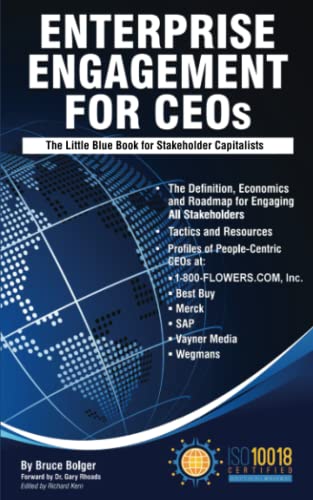
Through education, media, business development, advisory services, and outreach, the Enterprise Engagement Alliance supports boards, business analysts, the C-suite, management in finance, marketing, sales, human resources and operations, etc., educators, students and engagement solution providers seeking a competitive advantage by implementing a strategic and systematic approach to stakeholder engagement across the enterprise. Click here for details on all EEA and RRN media services.
1. Professional Education on Stakeholder Management and Total Rewards
- Become part of the EEA as an individual, corporation, or solution provider to gain access to valuable learning, thought leadership, and marketing resources.
- The only education and certification program focusing on Stakeholder Engagement and Human Capital metrics and reporting, featuring seven members-only training videos that provide preparation for certification in Enterprise Engagement.
-
EEA books: Paid EEA participants receive Enterprise Engagement for CEOs: The Little Blue Book for People-
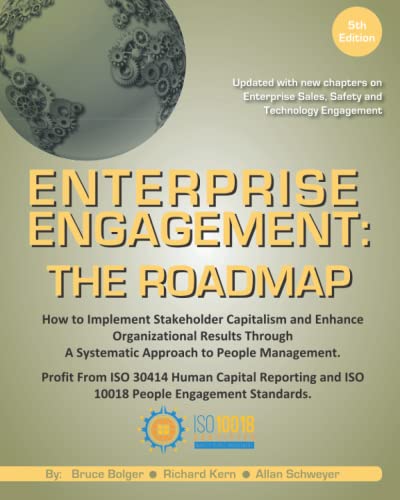 Centric Capitalists, a quick implementation guide for CEOs; Enterprise Engagement: The Roadmap 5th Edition implementation guide; a comprehensive textbook for practitioners, academics, and students, plus four books on theory and implementation from leaders in Stakeholder Management, Finance, Human Capital Management, and Culture.
Centric Capitalists, a quick implementation guide for CEOs; Enterprise Engagement: The Roadmap 5th Edition implementation guide; a comprehensive textbook for practitioners, academics, and students, plus four books on theory and implementation from leaders in Stakeholder Management, Finance, Human Capital Management, and Culture.
- ESM at EnterpriseEngagement.org, EEXAdvisors.com marketplace, ESM e–newsletters, and library.
- RRN at RewardsRecognitionNetwork.com; BrandMediaCoalition.com marketplace, RRN e-newsletters, and library.
- EEA YouTube Channel with over three dozen how-to and insight videos and growing with nearly 100 expert guests.
Strategic Business Development for Stakeholder Management and Total Rewards solution providers, including Integrated blog, social media, and e-newsletter campaigns managed by content marketing experts.
4. Advisory Services for Organizations
Stakeholder Management Business Plans; Human Capital Management, Metrics, and Reporting for organizations, including ISO human capital certifications, and services for solution providers.
5. Outreach in the US and Around the World on Stakeholder Management and Total Rewards
The EEA promotes a strategic approach to people management and total rewards through its e-newsletters, web sites, and social media reaching 20,000 professionals a month and through other activities, such as:
- Association of National Advertisers Brand Engagement 360 Knowledge Center to educate brands and agencies.
- The EEA Engagement widget to promote, track, and measure customers/employee referrals and suggestions that can be connected to any rewards or front-end program management technology.
- The Stakeholder Capitalism free insignia to promote a commitment to better business.
- The BMC Brand Club and transactional storefronts to educate corporate and agency buyers on the IRR market.
- The EME Gold program to educate the top 3% of promotional consultants on selling engagement and rewards services



